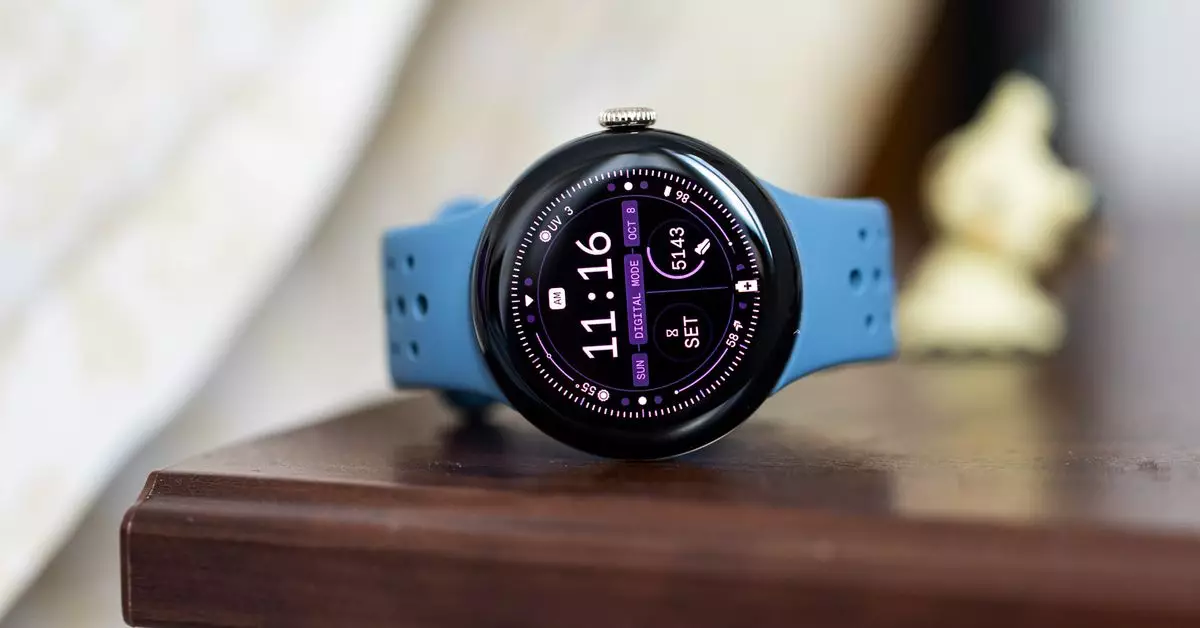In the rapidly evolving world of wearable technology, Google’s Pixel Watch lineup exemplifies how companies can both innovate and maintain reliable products. As we turn our attention to Google’s latest wearable releases, particularly the Pixel Watch 3, it becomes crucial to critically assess the previous model, the Pixel Watch 2, which remains an appealing option for many consumers. This article aims to explore the comparative advantages, key features, and pricing dynamics of these two timepieces, helping prospective buyers make informed decisions.
The Pixel Watch 2, released just prior to the debut of its successor, is not merely a stepping stone; it’s a formidable smartwatch in its own right. Retailing at a promotional price of $224—a notable reduction from its original cost—this smartwatch offers remarkable value. With a sleek design and a durable 41mm casing, the Pixel Watch 2 manages to deliver essential smart functions without feeling bulky on the wrist. The user interface is intuitive, complemented by the familiar Wear OS 5, which provides a seamless experience for those who require connectivity and functionality throughout their day.
Despite being a generation behind, the Pixel Watch 2 features the same Qualcomm Snapdragon Wear W5 Gen 1 processor that powers the newer model. For users who rely on smartwatches predominantly for fitness tracking and notifications, the Pixel Watch 2 remains an optimal choice. It promises around 24 hours of battery life, which is perfectly adequate for day-to-day usage, even with the always-on display enabled.
The Pixel Watch 3 has certainly stirred excitement among tech enthusiasts with its remarkable upgrades. With a larger 44mm screen that’s reported to be twice as bright as its predecessor, the new model enhances visibility and user experiences, particularly in bright outdoor conditions. Additionally, it introduces impressive AI-driven workout suggestions and offline access to Google Maps, features that were undoubtedly missing from the Pixel Watch 2.
However, it’s essential to evaluate whether these enhancements justify the significant price jump. At $350, consumers must weigh the cost against their personal needs and preferences. For those who prioritize advanced fitness tracking or require the expanded display for navigation purposes, the new features may warrant the higher price tag. Yet, it becomes clear that for many potential users—especially casual smartwatch wearers—the previous model still offers much of the same functionality for a considerably lower cost.
Price fluctuations and promotional offers play a significant role in consumer decision-making, particularly in a market saturated with options. As noted, major retailers like Amazon and Best Buy regularly provide discounts on both models, making the Pixel Watch 2 increasingly attractive at its reduced price. This pricing strategy becomes particularly crucial as consumers navigate their budgets in uncertain economic climates.
Moreover, the extensive loyalty programs and networks established by these retailers make it even easier for shoppers to feel confident in their purchases. By presenting the original Pixel Watch at a much lower price point while introducing a more expensive model, Google and its retail partners employ a strategic approach that appeals to a broad range of consumers—from fitness aficionados and tech enthusiasts to budget-conscious buyers looking for reliable wearables.
Ultimately, the decision between the Pixel Watch 2 and the upcoming Pixel Watch 3 hinges on personal priorities. If budget constraints are a significant factor, or if the additional features of the Pixel Watch 3 are not necessarily appealing, the Pixel Watch 2 is a still-relevant device that meets the foundational needs of a smartwatch.
Conversely, consumers who can afford the premium and require the latest functionalities may find value in investing in the Pixel Watch 3. Nonetheless, as technology continues to advance and upgrade cycles come faster than ever, it is paramount for potential buyers to critically assess their needs and the potential longevity of each device.
Both models present distinct advantages and opportunities for varied users, each fitting into a unique niche in the smartwatch market. Whether opting for the tried-and-true Pixel Watch 2 or venturing into the new capabilities of the Pixel Watch 3, consumers should approach their purchase with careful consideration to maximize both satisfaction and value.


Leave a Reply